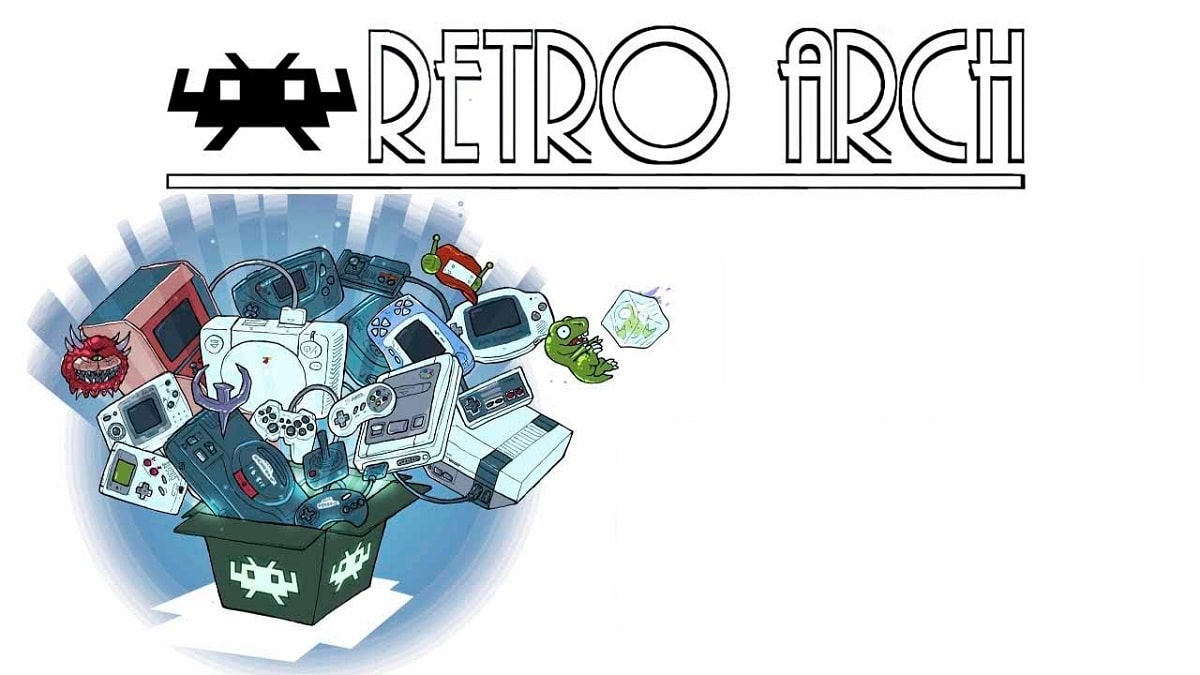
RetroArch is an interface for a wide variety of emulators. It has a number of features that you can play around with.
It was recently made knownrelease of the new version of RetroArch 1.15.0, version that comes with various important changes and of which the most important are those made in the version for MacOS.
For those unfamiliar with RetroArch, you should know that this allows emulation of various game consoles, allowing classic games to run with a simple and unified graphical interface.
In RetroArch se supports the use of console emulators such as Atari 2600/7800 / Jaguar / Lynx, Game Boy, Mega Drive, NES, Nintendo 64 / DS, PCEngine, PSP, Sega 32X / CD, SuperNES, etc.
Gamepads from existing game consoles can be used, including Playstation 3/4, Dualshock 3, 8bitdo, XBox 1, and XBox360 / One, as well as general-purpose gamepads like Logitech F710.
The emulator supports advanced features like multiplayer games, save status, old game picture enhancement by shaders, rewind games, hot plug game consoles and video streaming.
Main novelties of RetroArch 1.15.0
The new version that is presented RetroArch 1.15 Arrives With A Lot Of Improvements, of which many of them are focused on the macOS platform, since it stands out that Significant work was done to improve support, for example, the added support for the MFi protocol for gamepads.
Another novelty that stands out is that Simultaneous support is provided in a build of the OpenGL and Metal graphics API, while for the driver added for the Vulkan API, it already supports HDR.
Besides that, shader system implements the ability to cascade and overlay presets shader presets (you can mix different shader presets and save them as new presets). For example, you can combine CRT and VHS shaders to create visual effects.
An alternative method for calculating the output frames is proposed: "preemptive frames", which differs from the previously available "runahead" method by achieving higher performance by rewriting history before the current frame only if the controller state changes. In a test with Donkey Kong Country 2 on Snes9x 2010, performance increased from 1963 fps to 2400 fps with the new method.
Of the other changes that stand out from the new version:
- Added glcore driver for video output using OpenGL 3.2. A RetroArch build for macOS is hosted on Steam.
- On builds for the Android platform, added the input_android_physical_keyboard setting and a menu item to force the device to be used as a keyboard instead of a gamepad.
- Improved support for the Wayland protocol, additional support for pointer constraints, and relative pointer protocol extensions.
- Redesigned menu.
- Improved support for the Vulkan graphics API.
Finally if you want to know more about this new version, you can check the details In the following link.
How to install RetroArch on Linux?
To install the RetroArch arcade emulator on Linux we will support each other with the installation through Snap, for this it is necessary to have the support of this technology installed in your system.
To install in our system, we simply have to open a terminal and run the following command:
sudo snap install retroarch
And with this we only have to wait for it to download the necessary packages and wait for the installation to perform, this process may take a few minutes.
Once this is done, we simply go to our applications menu and we are looking for RetroArch to be able to execute it in our system.
If you already have RetroArch installed by this method, you can update it with the following command:
sudo snap refresh retroarch
Yes now they will use their keyboard and mouse to play their favorite titles they should not have any problemEven if you use a remote control via Bluetooth connection, RetroArch must recognize it and allow you to configure it without any problem.
Although If you are going to use a remote connected via USB, you will probably have some setback that RetroArch doesn't recognize it.
That is why they should add extra support for this. They must open a terminal and execute the following commands:
sudo snap connect retroarch:raw-usb sudo snap connect retroarch:joystick
Now RetroArch should already recognize the USB control which can already be configured in the application.